Settings
This screen aims to allow configuration of users, audit, plugins, and tokens in Sinfonia.
Users
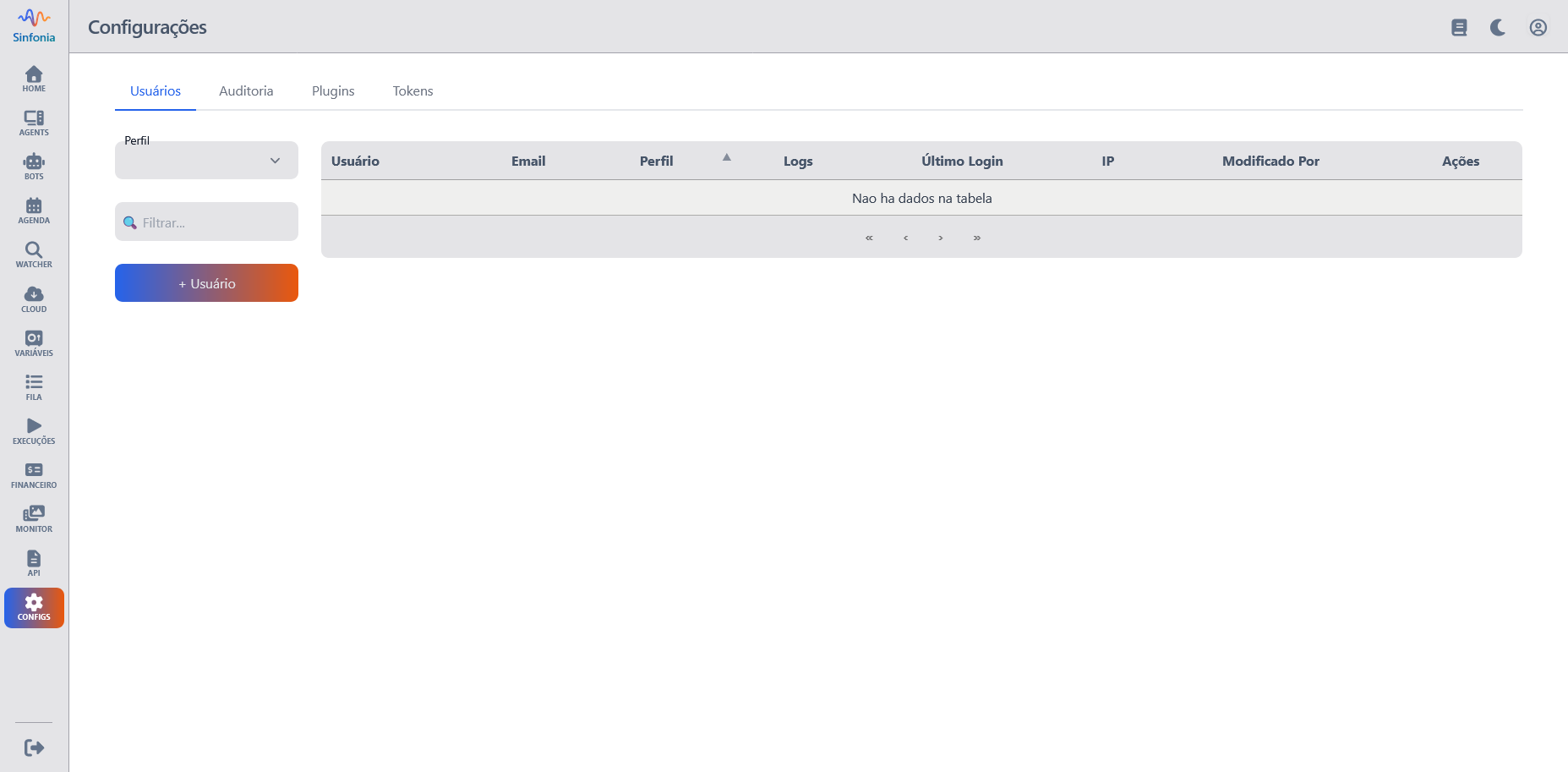
Data Table
| Column | Description |
|---|---|
| User | Name of the user with access |
| User email | |
| Profile | Admin, Dev, User |
| Logs | Log viewing permission |
| Last Login | Date/Time of last login |
| IP | User origin (IP) |
| Modified By | User who made the last modification |
| Actions | Permission to delete or edit the user |
New User
To create a new user with admin/dev profile, click + User.
Admin/Dev
To create a new user with admin or dev profile, click + User.
User
- Description: Enter the username
- Validation: Must be unique
Email
- Description: User email
- Validation: Must be unique and in valid format (e.g., user@domain.com)
Profile
- Description: Enter the user profile (admin, dev, user)
- Validation: Must be one of the predefined values (admin, dev, user)
User
To create a new user with user profile, click + User.
User
- Description: Enter the username
- Validation: Must be unique
Email
- Description: User email
- Validation: Must be unique and in valid format (e.g., user@domain.com)
Profile
- Description: Enter the user profile (admin, dev, user)
- Validation: Must be one of the predefined values (admin, dev, user)
Agents (View)
- Description: Select the agents that the user can view
Bots (View)
- Description: Select the bots that can be viewed.
Bots (Run)
- Description: Select the bots that can be executed.
View logs
- Description: Enables option to view automation logs.
Delete
To remove a user, click the trash icon in the Delete column.
Tip
A confirmation modal will be requested.
Audit
Refers to monitoring actions performed in the system, such as creation, update, and deletion of bots, agents, users, among others.
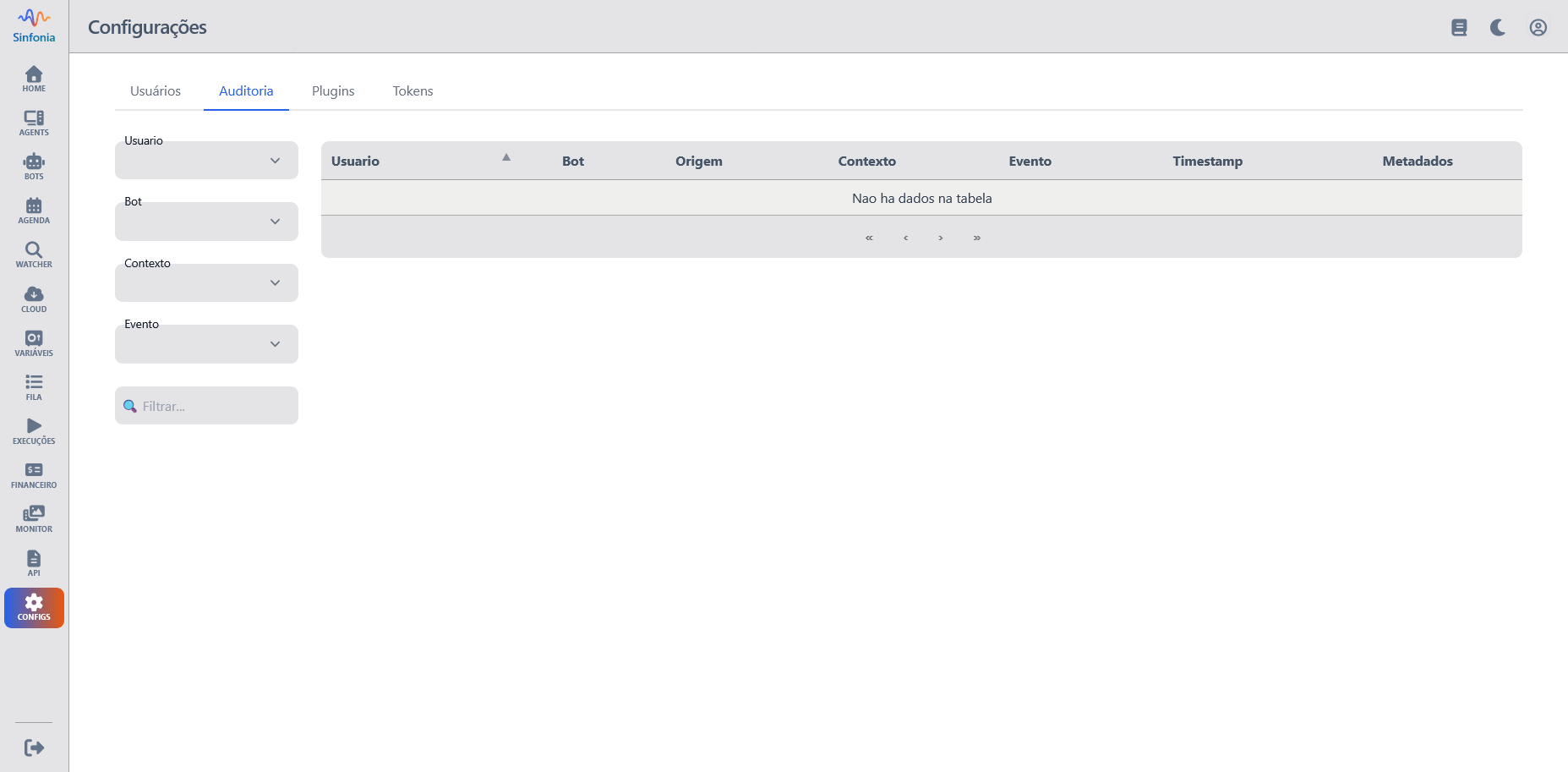
| Column | Description |
|---|---|
| User | User who performed the operation. |
| Bot | The bot that underwent the operation. |
| Origin | The IP origin. |
| IP | Which entity was changed. |
| Event | The operation event (create, update, read). |
| Timestamp | Date/Time when the operation occurred. |
| Metadata | View changed data. |
To view metadata, click the icon in the Metadata column.
Plugins
Refers to configuring integrations with external services such as MS Teams, Hashicorp, OpenAI, and Automation Anywhere.
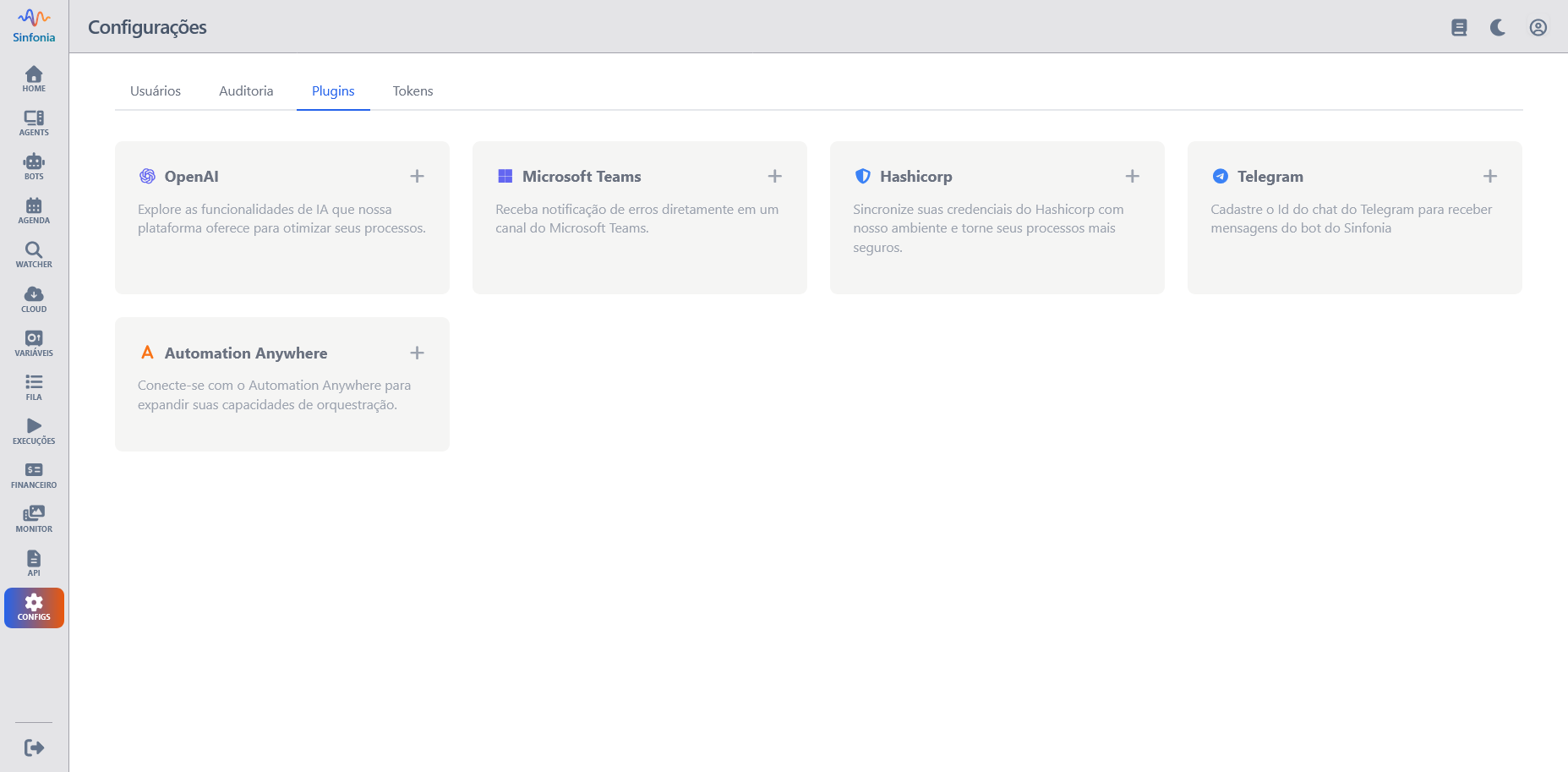
Microsoft Teams
To send notifications via Teams, fill in the fields as below and click Save.
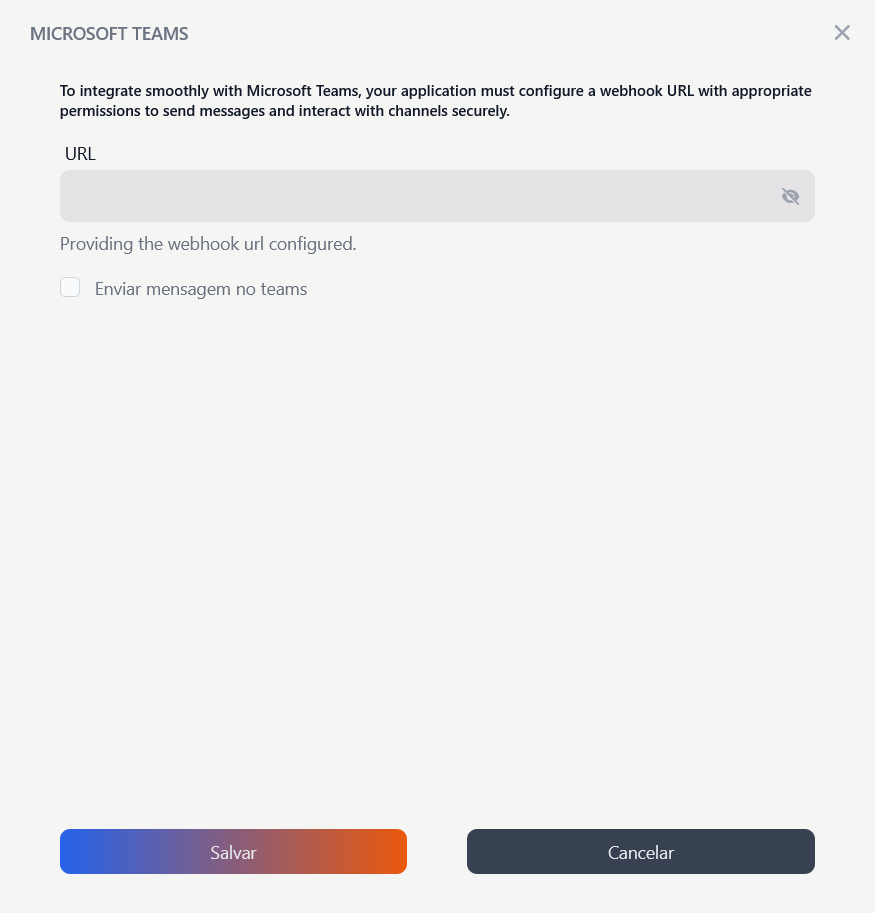
URL
- Description: Enter the webhook URL generated in Teams, e.g.,
https://outlook.office.com/webhook/....
Send Teams
- Description: Option to enable/disable Teams sending.
Hashicorp Vault
To synchronize the Hashicorp password vault in Sinfonia, fill in the fields as below and click Save.
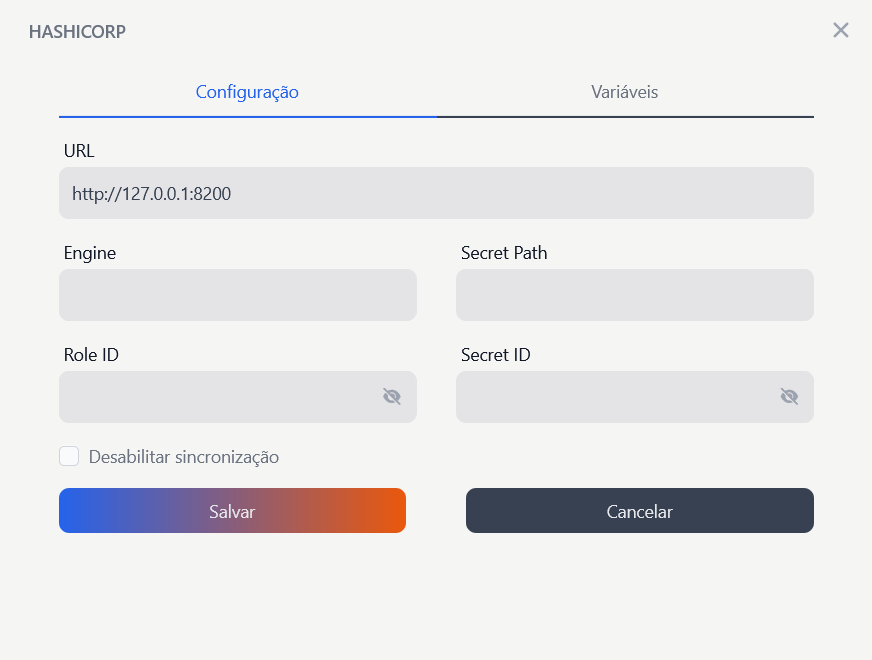
URL
- Description: Enter the vault URL, e.g.,
http://address:8200
Engine
- Description: Name of the “k/v” type vault, e.g.,
secret
Secret Path
- Description: Path where secrets are stored, e.g.,
secret/data/sinfonia
RoleId
- Description: Identification hash.
- Example:
f3b6c8d2-1e5a-4c3b-9f0a-1e2d3c4b5
SecretId
- Description: Authentication hash.
- Example:
a1b2c3d4-5e6f-7g8h-9i0j-1k2l3m4n5op
Disable
- Description: Option to enable/disable synchronization
OpenAI LLM
To use AI features, it is necessary to register your valid OpenAI key.
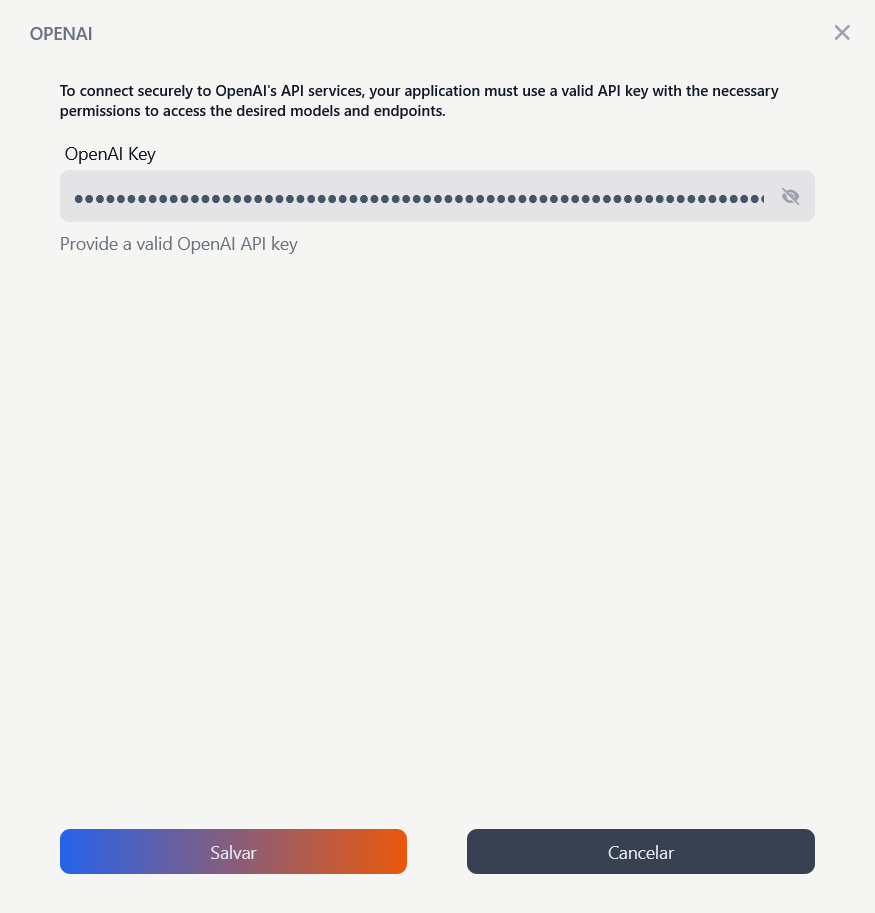
OpenAI Key
- Description: Enter the OpenAI API key.
Automation Anywhere
For integration with Automation Anywhere, fill in the fields as below and click Save.
Control Room URL
- Description: Enter the Control Room URL, e.g.,
https://address
Workspace
- Description: Workspace name, e.g.,
private
User
- Description: Enter the AA user
Password
- Description: Enter the AA password
API Key
- Description: Enter the AA API key
Allow Multiple Logins
- Description: Option to allow multiple logins
Tokens
Refers to generating and managing authentication tokens for access to Sinfonia API and agent.
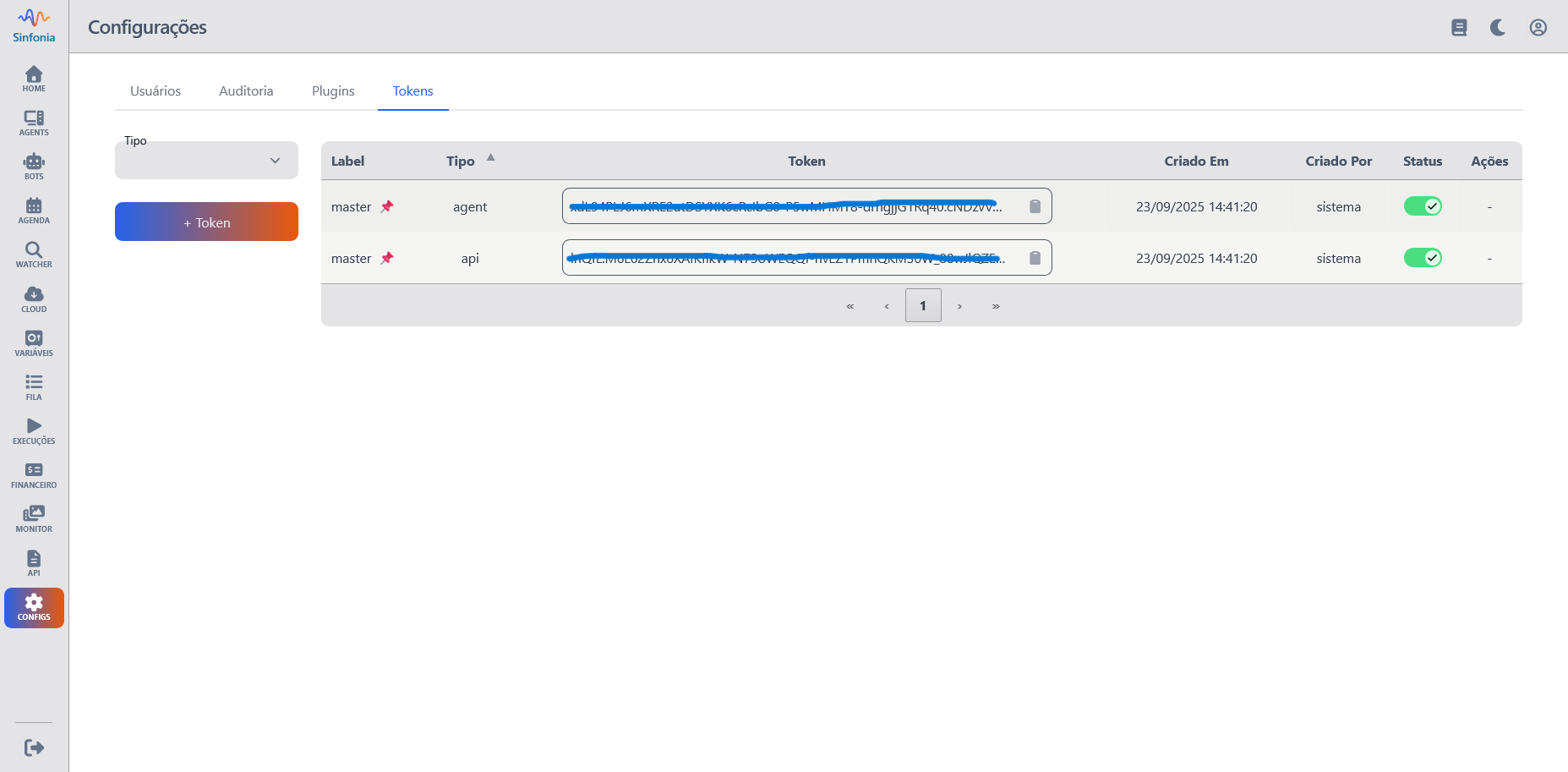
Note
For API integrations, use API type tokens.
For agent authentication, use Agent type tokens.
| Column | Description |
|---|---|
| Label | Token name |
| Type | Token type (API or Agent) |
| Token | Token value (click icon to copy to clipboard) |
| Created At | Date/Time when the token was created |
| Created By | User who created the token |
| Status | Token status (Active or Inactive) |
| Actions | Permission to delete the token |
New Token
To create a new token, click + Token.
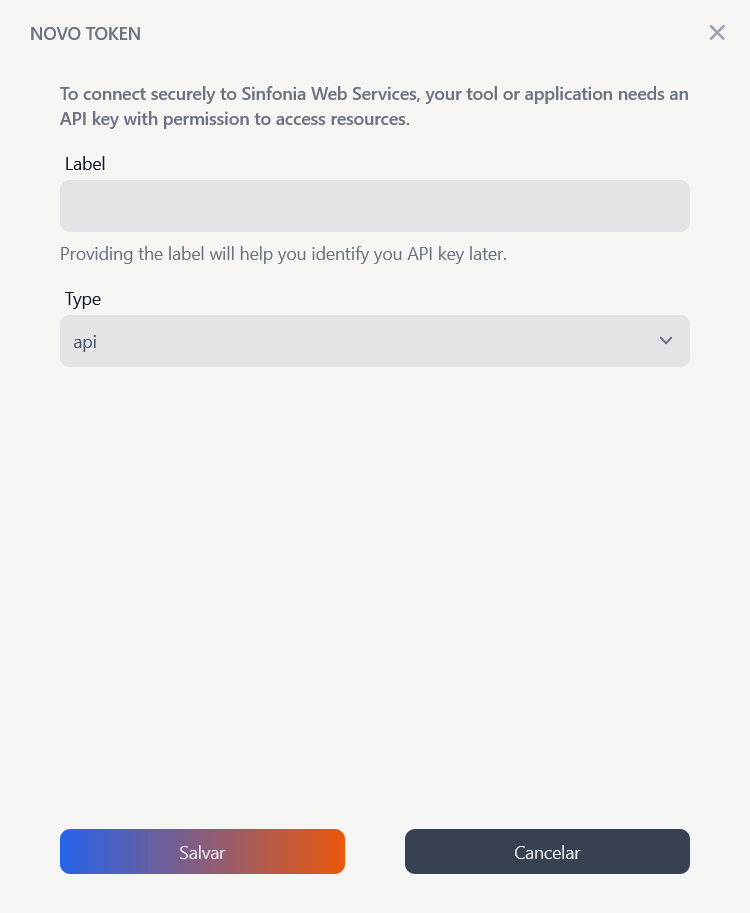
Fill in the fields as below and click Save.
Label
- Description: Enter the token name
- Validation: Must be unique
Type
- Description: Select the token type (API or Agent)
- Validation: Must be one of the predefined values (API or Agent)
Delete
To remove a token, click the trash icon in the Actions column.
Tip
The number of agent tokens is controlled by the number of agents acquired in the license.